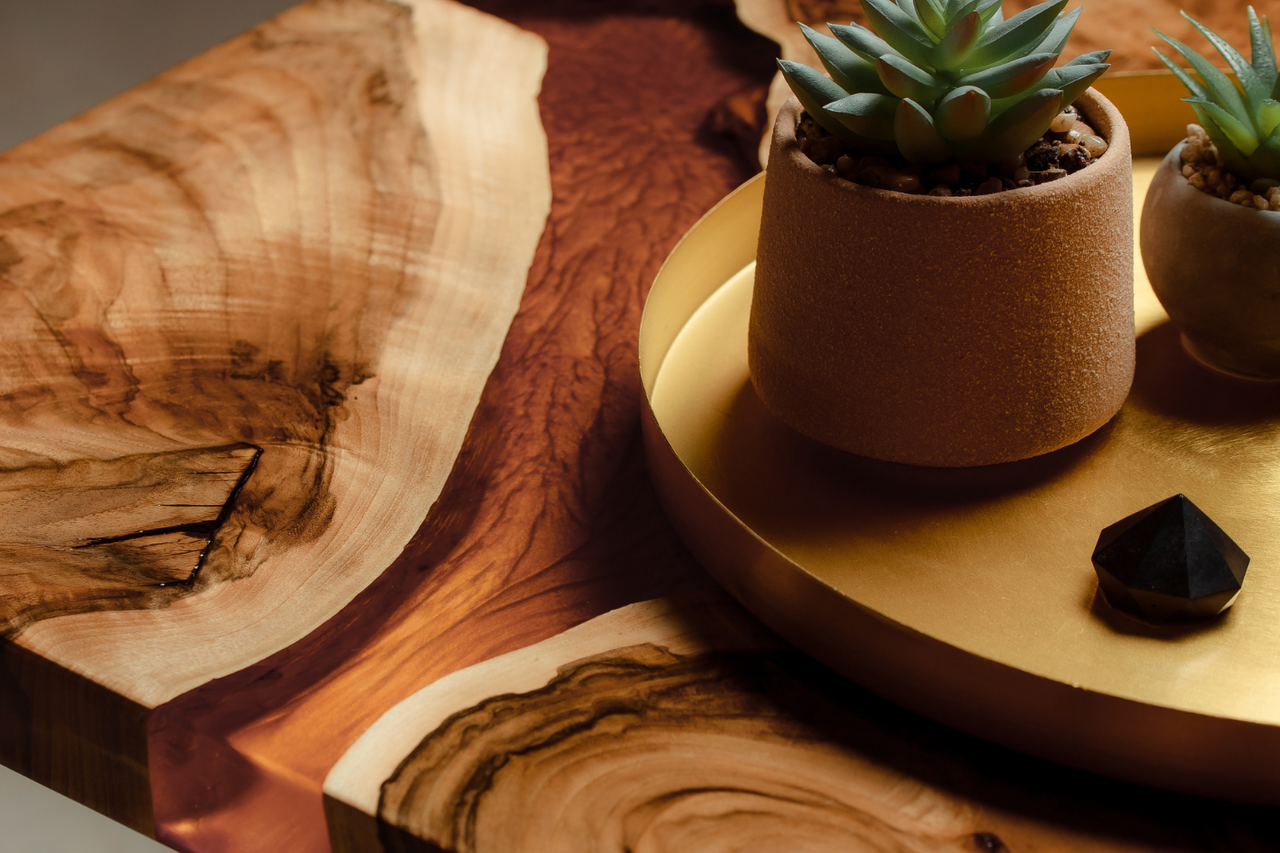Nothing dampens the excitement of unveiling your epoxy masterpiece like discovering a cloudy finish. Whether you're crafting a river table, jewelry, or a glossy countertop, clarity is key. Fortunately, understanding the causes of cloudiness and how to prevent or fix them can ensure your projects shine as intended.
Understanding the Causes of Cloudy Epoxy
Cloudiness in epoxy resin can result from several factors. Let's explore the most common culprits:
1. Moisture Contamination
Epoxy resin is sensitive to moisture. High humidity or damp materials can introduce water into the mix, leading to a milky appearance. Ensure your workspace has humidity levels below 60%, and always use dry tools and materials.
2. Improper Mixing
Incomplete or vigorous mixing can trap air bubbles or leave unmixed resin and hardener causing cloudiness. Mix slowly and thoroughly, scraping the sides and bottom of your container for at least 3-5 minutes.
3. Temperature Fluctuations
Epoxy cures best between 70F-75F (21C-24C). Cold temperatures can thicken the resin, trapping bubbles, while high temperatures can accelerate curing, leading to imperfections. Maintain a stable, room-temperature environment during the curing process.
4. Air Bubbles
Rapid stirring or pouring can introduce air bubbles that became trapped in the resin, resulting in a cloudy finish. To minimize bubbles, stir gently and consider using a heat gun or torch to release surface bubbles after pouring.
5. Contaminated or Matte Molds
Using molds with a matte finish or those contaminated with dust or oils can affect the clarity of your epoxy. Opt for clean, glossy molds to achieve a clear finish.
How to Fix Cloudy Epoxy
If your cured epoxy has turned cloudy, don't worry - there are several methods to restore its clarity:
1. The Wet Rag Technique
For minor surface cloudiness, gently rubbing the area with a damp cloth can sometimes clear up the haze. This method is quick and worth trying before more intensive fixes.
2. Sanding and Polishing
If the wet rag doesn't suffice, sanding the surface with progressively finer grit sandpaper (starting around 120 grit and moving up to 1000 grit) can remove the cloudy layer. After sanding, polish the surface with a suitable polishing compound to restore its shine.
3. Recoating with a Fresh Layer
After sanding, applying a new, properly mixed layer of epoxy can rejuvenate the surface. Ensure the environment is optimal - dry, clean, and at the right temperature - to prevent recurring issues.
Preventing Cloudiness in Future Projects
Prevention is always better than cure. Here are some best practices to maintain epoxy clarity:
- Control Humidity: Keep your workspace's humidity below 60% to prevent moisture-related cloudiness.
- Maintain Optimal Temperature: Work in a stable environment between 70F-75F.
- Use Clean, Glossy Molds: Ensure molds are clean and have a glossy finish to promote clarity.
- Mix Thoroughly and Gently: Stir the resin and hardener slowly and thoroughly to minimize air bubbles.
- Seal Porous Materials: If embedding items like wood or flowers, seal them first to prevent moisture release.
Achieving a crystal-clear epoxy finish is both an art and a science. By understanding the causes of cloudiness and implementing preventive measures, you can ensure your projects turn out as envisioned. And if cloudiness does occur, the solutions above can help restore your work's clarity.



6 comments
Table top is trash
Table top is trash
I have an unopened gallon actually several of deep pour a that is roughly 6 months old it has been stored in my heated and air conditioned bedroom and I did a pour 1.5 gallon and it looked like there were tiny flecks of plastic in charcuterie board mold so I pour it out sanded down my pieces got another gallon of deep pour a and upon inspec It looks as if it is full of small almost dandruff looking flecks of plastic what do I do?
I can’t seem to get the bubbles out of my project. I even barely stir the quick dry epoxy.
I have sanded my epoxy all the way to 5000 grit and can’t seem to get it shiny. I’ve used polishing compound and it stays dull. What am I doing wrong?
Thank you